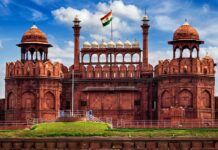[vc_row][vc_column][vc_column_text]
The road to recovery for the pandemic-hit Indian economy seems long one. Reason: the economy has entered a technical recession with the Gross Domestic Product (GDP) registering a negative growth for two successive quarters during the financial year 2020-21.
The economy, which had already been under strain for the past few years, received a body blow from the nationwide lockdown imposed in March 2020 to contain the spread of Covid-19. With little hope of a positive growth in the remaining two quarters of the current financial year what this effectively means is that the government’s claims of a V-shaped recovery or even a long-term one suggested by various experts may be pushed further to the middle of 2021.
A longer recovery curve means a prolonged rough patch for a large section of the population struggling to cope with the loss of jobs and livelihood, low demand, high prices of essential commodities and accompanying financial hardships resulting from a sunken economy.
As per the latest official data, India’s GDP contracted -7.5 per cent during the July-September period after registering a record -23.9 per cent growth during the April-June period in 2020. The manufacturing sector, where the bulk of the jobs come from, showed marginal growth of 0.6 per cent in July-September against -39 per cent in April-June, but this recovery could be due to cost cutting by companies and low wage bills rather than actual improvement, the experts have cautioned.
The construction sector grew at 8.6 per cent in July-September from -50 per cent in April-June, agriculture remained same at 3.4 percent but mining, retail, hotels and financial services appeared to be bleak at -15.6 per cent from -47 per cent in April-June.
The economic slump dented the profits of large corporates and forced small and medium businesses to shut down taking away jobs of millions while bringing in pay cuts for others in the process.
In the wake of the latest GDP data, Chief Economic Adviser K Subramanian has said that it is difficult to be sure about a positive growth over the remaining two quarters which will end by March 31, 2021. Earlier, Finance Minister Nirmala Sitharaman had cautioned that the economy could end up with zero per cent growth in 2020-21.
Many experts who have been tracking the Indian economy have said that some recovery shown during the July-September period is actually due to the pent-up demand which remained suppressed during the lockdown phase and it remains to be seen if the country is able to generate a sustained demand over a longer period.
In the short term, a significant contributor to some positive developments on the recovery front has been the festive season (October-November) spending that brought cheers to businesses but the corresponding rise in the number of Covid-19 cases in Delhi and some states during November again revived concerns over the long-term impact of the pandemic on the Indian economy.
How soon will India be able to stave off the impact of Covid-19 depends on the availability of a vaccine to help boost consumer confidence and push up the sagging demand. Though a few vaccine options are on the horizon, the picture is still not clear as to which is most effective one and then once a vaccine is available how long would it take for the entire 1.3 billion population to be covered.
High inflation too will hamper real growth and will continue to disrupt economic recovery as the country will continue to battle high unemployment.
Capital expenditure, generally known as government spending, too has been hit. As a result several states have been forced to review their infrastructure projects. Due to the impact of Covid-19, the states have come under severe financial stress as revenue streams dried up during the lockdown.
External factors like slow growth of the global economy and capital inflows too will have an adverse impact on the growth of the Indian economy which is now part of an international system.
There have been various projections about how long the Indian economy will take to reach the pre-Covid-19 levels. All have consensus on one thing. That the way forward is not going to be easy. The International Monetary Fund (IMF) has recently predicted that it will take the Indian economy around three years to recover against the government estimates that claimed the recovery will happen in 2021.
While we keep our fingers crossed on this issue, the impact of both the Rs 20-lakh crore financial package from the Central government, most which was loan-based and the self-reliance plan launched subsequently to boost a sunken economy, are long-term solutions which have left much of the population asking for more.
[/vc_column_text][/vc_column][/vc_row]
Disclaimer: We do undertake rigorous checks on content provided by contributors before publishing the same. If you come across some factual errors, kindly bring this into our notice and we shall review your objection and claim as per our policy and display correction credits and corrections on the article itself.
The opinion expressed in the article is of the writer. Writer is a freelance journalist/journalist based in Delhi




























